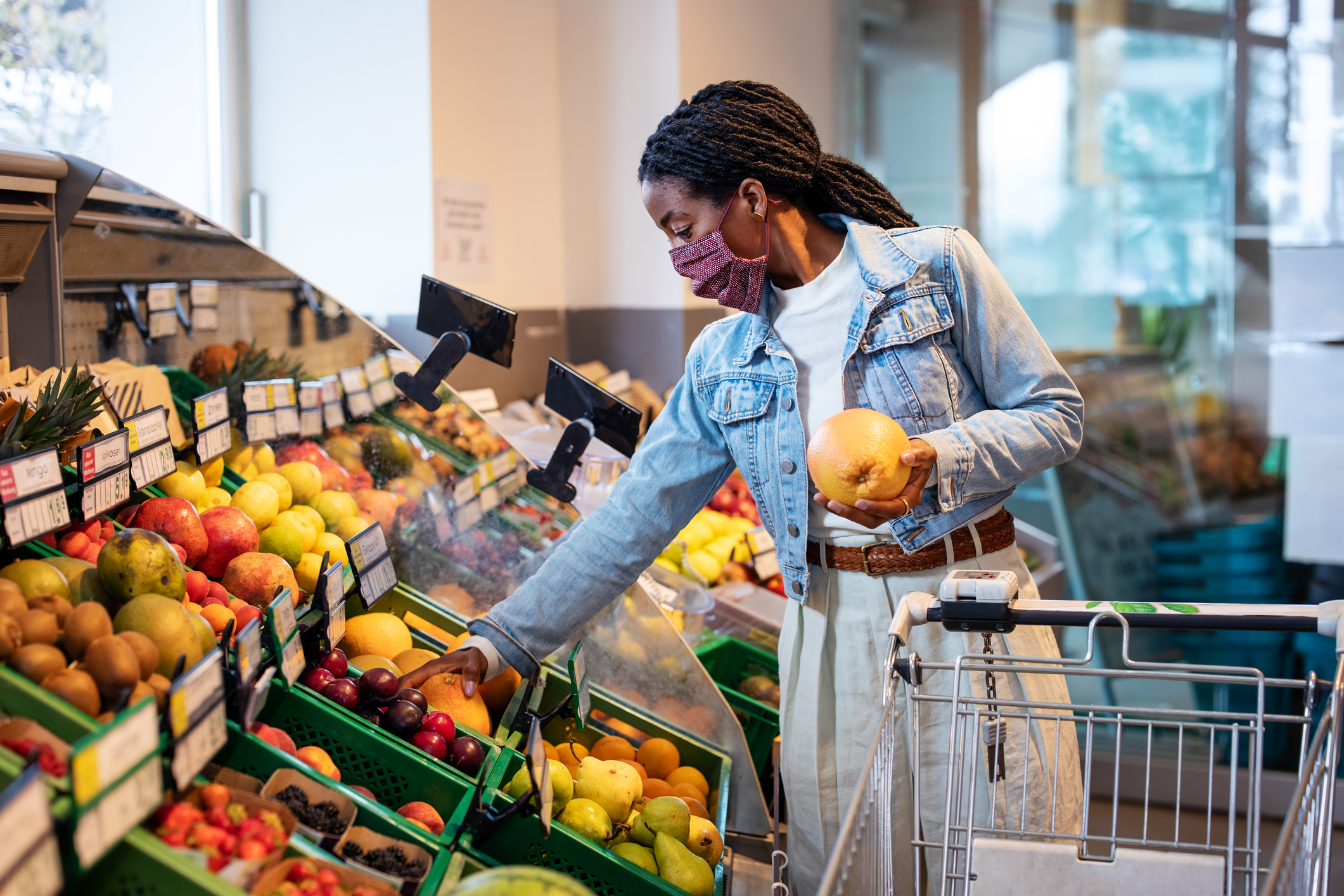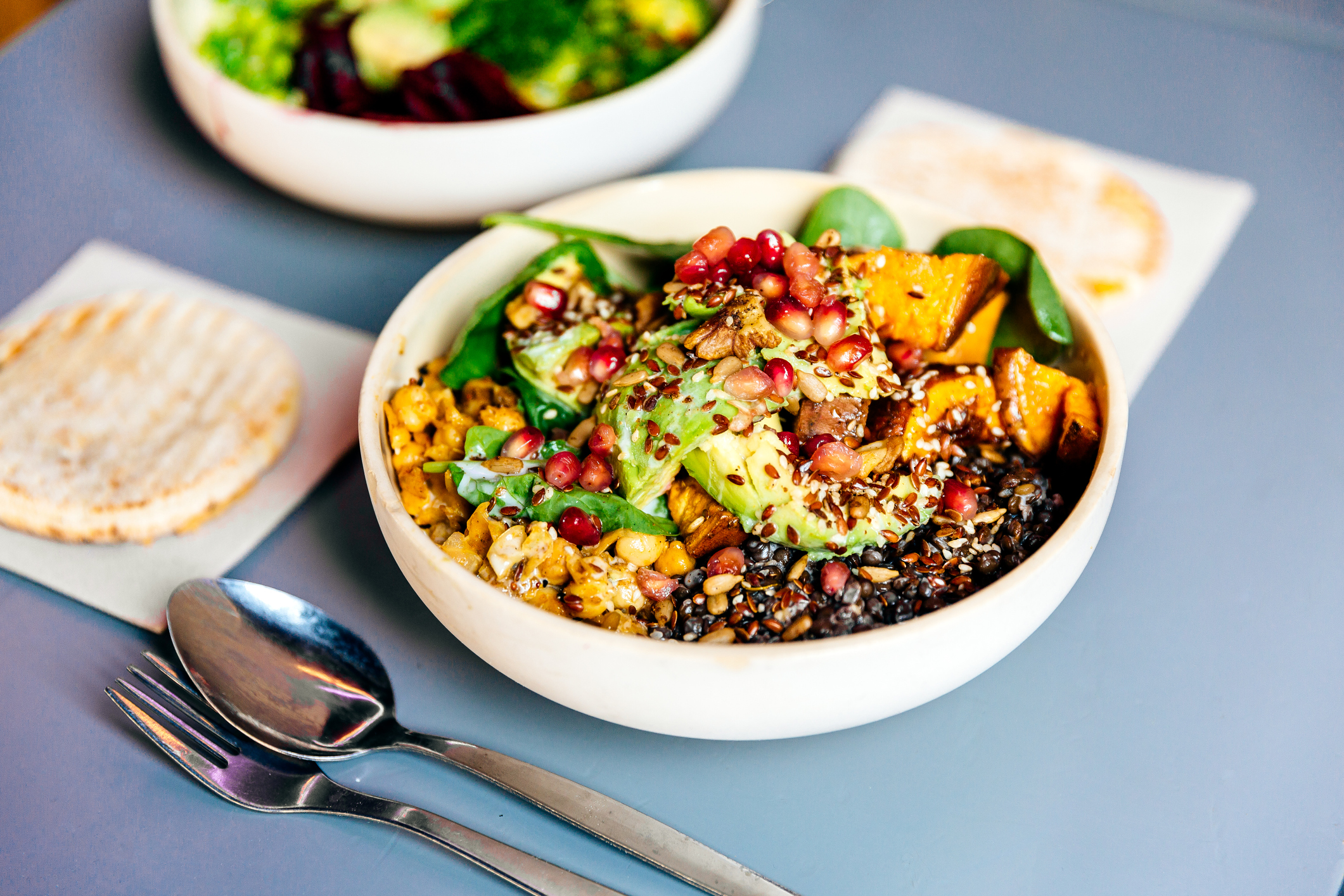
"Focus on what you can add, rather than what you feel you should take away."
Ever wondered how many servings of fruit and vegetables per day you should be eating?
While many might assume that it's common knowledge that we should be aiming for 5-a-day - that is, five portions of fruit and veg - for a healthy, balanced diet, newer research shows that this guideline may be a little - well, inaccurate.
Case in point: research from University College London in 2014 found that eating seven to eight portions of fruit and veg per day resulted in greater benefit than five - but guidelines weren't changed as it was felt this number was less achievable.
We spoke to Lucy Kerrison, gut specialist and registered dietitian at The Gut Health Clinic, and doctor Megan Rossi, gut health expert and founder of The Gut Health Clinic, to get their take. How many servings should we be eating? 5? 10? 20?
While there are loads of barriers to eating well - income, time restraints, and so on - we've also got a pretty handy trick to help you up your own fruit and veg intake, if you do struggle. Keep scrolling for your answer.
How many servings of fruit and vegetables per day? Your guide
Fun fact: the 5-a-day guidelines were originally a government campaign that was launched in March 2003 to encourage people to eat more fruits and veggies, shares the dietician. "We know fruits and vegetables are a rich source of vitamins, minerals, and fibre," she shares - therefore health experts have long encouraged eating more of them, for planet and personal health.
Celebrity news, beauty, fashion advice, and fascinating features, delivered straight to your inbox!
But why the number five? Is it some kind of magic number? Short answer: no. "The number five was felt to be achievable and memorable, as well as being based on the World Health Organisation’s (WHO) recommendation that 400g of fruit and veg per day (e.g. five x 80g portions), were thought to reduce the risk of conditions such as type 2 diabetes, heart disease, and stroke," she explains.

What does 5-a-day look like IRL?
- 80g of fresh, canned, or frozen fruit and vegetables = 1 portion (around 1 handful)
- 30g of dried fruit = 1 portion (around 1 palmful)
- 150ml fruit or vegetable juice can be counted once in a day = 1 portion
- 80g beans and pulses can be counted once in a day = 1 portion.
Do I need to be eating more than 5-a-day?
Bottom line? If you can.
While eating a healthy, balanced diet that works for you is the main priority (some may feel they can't afford that much fruit and veg daily), various research articles have shown that it's best to view your fruit and veg intake over a week, versus a day, and focus on variety, rather than hitting a daily target.
Case in point: research from the American Gut Project showed that you should be aiming for 30 different plant-based products per week - an average of 4.2 per day. "Data showed that the gut health of those eating 30 different plant-based products per week were more diverse that those eating less than 10 per week," she explains. (Read our go-to gut health hacks, here).

Obviously, this is an ideal, and won't be doable for everyone, but is a base guideline. What is a plant-based product, you ask? Good question - as, fun fact, it's not just fruit and veg. They include:
- Veggies (e.g brussels, carrots, peas…)
- Fruits (e.g. apples, pears, Sharon fruit…)
- Beans/pulses (e.g. black beans, butter beans, chickpeas….)
- Wholegrains (quinoa, wild rice, buckwheat, wholegrain pasta…)
- Nuts/seeds (cashews, almonds, brazils, sunflower seeds, chia….)
- Herbs/spices (each counting ¼ point toward your 30)
Our guides to a vegan diet and a plant-based diet may help with ideas, too.
The thought of eating 30 different plant-based products a week is overwhelming - help!
Yep - 30 seems rather a lot, doesn't it?

One great bit of advice from doctor Megan Rossi? "Focus on what you can add, rather than what you feel you should take away," she advises. For example, adding chia and almonds to your favourite cookie recipe to add a different texture, creamy oats to a homemade Eton mess, or making your own baba ghanoush crisp dip from roasted aubergine - nutrient-dense and delicious, too.
So many people view "healthy" or plant-based eating as restrictive when really, it should be about finding the fruit, veg, nuts, seeds, legumes, and so on that you love eating and enjoy making tasty meals from regularly.
Sure, load your plate with the good stuff, but also eat anything that isn't deemed as nutritionally dense when you fancy it, too - life is about balance, after all.
Don’t miss our guides to vegan protein, what causes bloating, and vegan protein sources, while you’re here.
Top tips for upping your plant intake:
- Focus on what you get to add, rather than what you think you need to take away.
- Keep a tub of mixed seeds on your dinner table to sprinkle on one or more meals per day
- Mix up your herbs and spices - get experimenting.
- Buy mixed nuts rather than one singular type for more variety.
- Plan ahead - meal prep takes the stress out of mealtimes and keeps you on track.
- Start small - aim to try one new plant-based product per week.
- Make it fun - tally up your plant-based points across the course of the week, especially if you're trying to get your kids involved.
How many servings of fruit and vegetables per day? Sorted.

Ally is Marie Claire UK's Senior Health and Sustainability Editor, a well-regarded wellness expert, ten-time marathoner, and Boston Qualifying runner.
Utilising her impressive skillset and exceptional quality of writing, she pens investigative, review and first-person pieces that consistently demonstrate flair and originality.
As well as writing, Ally manages a team of freelancers, oversees all commissioning and strategy for her pillars, and spearheads the brand's annual Women in Sport covers, interviewing and shooting the likes of Mary Earps, Millie Bright, and Ilona Maher. Shortlisted for three BSMEs and winning one in 2022, Ally lives and breathes her verticals: her eye for a story and connections within the wellness sphere are unrivalled. Follow Ally on Instagram for more.
